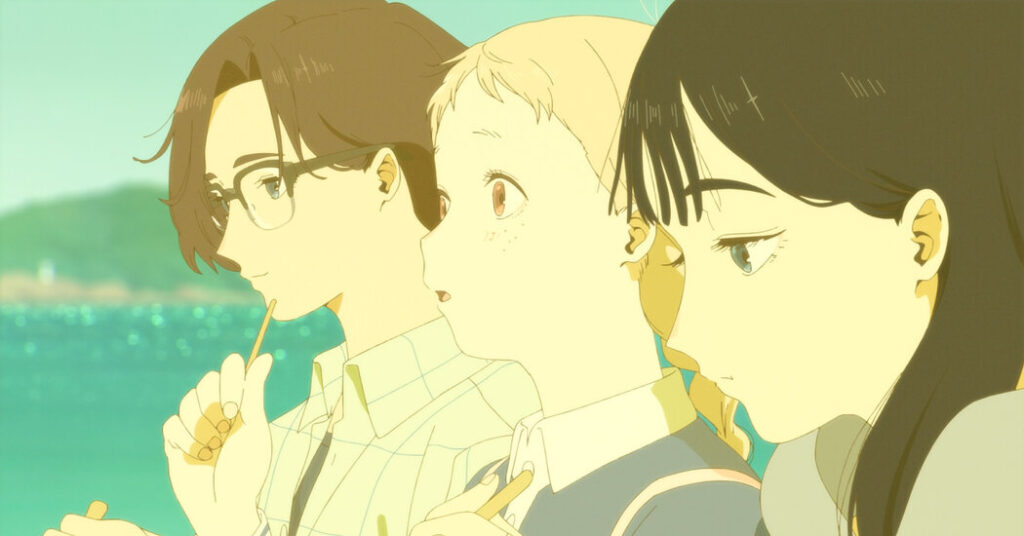In the new anime film “The Colors Within,” a teenage girl named Totsuko has the synesthetic ability to see people’s “colors” — their auras or spirits, expressed in vivid watercolor silhouettes. Totsuko encounters Kimi, a former classmate, and Rui, a college-bound music lover, and they end up forming a band. The film then plays like an extended vignette about the friendship that blooms among the three teens, but for all of its hues, “The Colors Within” doesn’t feel like a fully illustrated work.
As the film begins Totsuko is attending a Christian boarding school with Kimi, a popular girl whose color is a mesmerizing electric blue. When Kimi suddenly drops out of the school, Totsuko searches her out, eventually discovering her practicing guitar while working at a secluded little bookstore. Shopping in the bookstore is Rui, a boy whose extensive studies for his future career in medicine don’t deter him from his secret love for creating music. The three agree to compose and play songs together, using an old church on a remote island as a rehearsal space.
The movie’s action doesn’t extend much further than that; though the band is, for each of the three nascent musicians, a small act of independence, even rebellion, “The Colors Within” has such an aloof tone that the deeper motivations and stakes for each character, though alluded to, don’t feel substantial enough to provide the story with any sense of urgency.
Rui is quietly distant from his mother, who expects him to take over the family’s medical clinic. Kimi hasn’t told her grandmother, whom she lives with, that she has dropped out of school. And Totsuko, who once aspired to be a ballerina in the dance school her mother owns, now twirls through the halls on her own and tries to be the most respectful, devout student she can be. But “The Colors Within” is more invested in their enthusiasm for making music together than in the shared feeling of alienation, and the platonic (and even, perhaps, romantic) interest that led them to one another in the first place.
This musical slice-of-life anime recalls other coming-of-age musical films like “On-Gaku: Our Sound” and series like “Carole & Tuesday” and “Your Lie in April,” though those three examples provide a more trenchant unpacking of their characters and whimsical displays of the music-making process than we find in ‘The Colors Within.”
Likewise, there’s a quiet, insular quality to the direction, by Naoko Yamada, that is at times beautifully evocative — especially when focused on the central characters’ facial expressions — but at other times can veer toward the prosaic.
“The Colors Within” concludes with Totsuko, Kimi and Rui playing their original songs for a festival at Totsuko’s school. In their final song, written primarily by Totsuko, they sing the playful nonsensical lyrics, “Sweet, kin planets up orbiting, amen!” It’s a lively — and infectiously catchy — electro-pop song, a quasi hymn of praise reflecting Totsuko’s sense of faith as well as her affection for her bandmates and the music they make together. But when the concert — and the film — ends, there’s little sense of resolution for these characters, how their lives will proceed, how their relationships have changed and what will happen to their band and the music they’ve made together. For a movie in which people are colors and music is faith, “The Colors Within” could do with a more expanded palette.
The Colors Within
Rated PG. In Japanese, with subtitles. Running time: 1 hour 41 minutes. In theaters.
https://www.nytimes.com/2025/01/23/movies/colors-within-review-naoko-yamada.html


